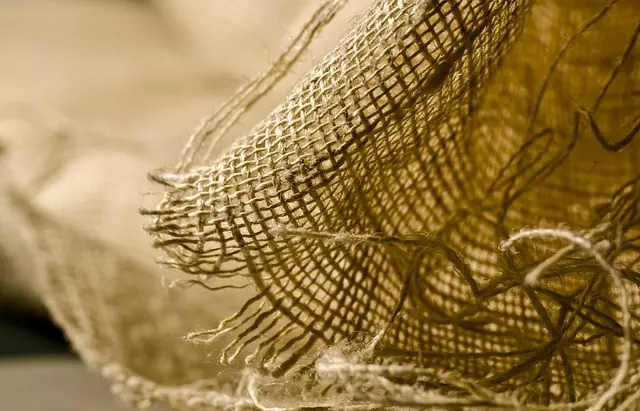The Mitragyna speciosa tree, commonly known as the kratom tree and native to Southeast Asia, is an evergreen that can grow up to 30 meters tall with large, leathery leaves featuring a unique vein pattern. Its alkaloids, particularly mitragynine and 7-hydroxymitragynine, are recognized for their potential pain-relieving effects, which may stem from interaction with opioid receptors in the brain. Kratom is gaining interest as a natural alternative for managing pain, though its safety profile and efficacy require further scientific investigation. It's crucial to approach kratom use with caution due to variability in dosage, strain effects, and individual responses. Users should consult healthcare providers before incorporating it into their health regimen, considering its legal status and the importance of sourcing reliable products. Those interested in kratom should do so with a well-informed approach, mindful of personal tolerance and potential risks to maximize benefits while ensuring safety. Incorporating kratom into a pain management routine involves understanding what a kratom tree looks like and the concentration of its active alkaloids, as these factors can significantly influence its effects.
Discover the natural pathway to muscle soreness relief with kratom, a botanical extract derived from the leaves of the Southeast Asian kratom tree. Known scientifically as Mitragyna speciosa, this evergreen tree’s characteristics and active compounds have been studied for their potential therapeutic effects, particularly in easing post-exercise discomfort. This article delves into the biology of the kratom tree, exploring its unique role in muscle soreness alleviation, while also offering a guide to safely incorporate this remedy into your wellness routine. Whether you’re an athlete or a fitness enthusiast, understanding what does a kratom tree look like and how it works can be pivotal in managing post-exercise pain naturally.
- Unraveling the Biology of the Kratom Tree and Its Role in Muscle Soreness Relief
- Exploring the Potential of Kratom for Alleviating Post-Exercise Aches
- A Guide to Safely Integrating Kratom into Your Regimen for Muscle Soreness Reduction
Unraveling the Biology of the Kratom Tree and Its Role in Muscle Soreness Relief

The kratom tree, native to Southeast Asia, is a member of the Rubiaceae family and shares a botanical affinity with coffee shrubs. Known scientifically as Mitragyna speciosa, this evergreen tree can grow up to 30 meters in height and possesses a complex architecture. Its leaves, which are the primary source of its bioactive compounds, are broad and leathery, with a distinct pattern of veins running along their surface. The leaf’s veins converge towards the petiole, which is the stalk that attaches the leaf to the stem. The tree’s biological properties are attributed to the alkaloids found within its leaves, particularly mitragynine and 7-hydroxymitragynine, which have been studied for their potential analgesic effects. These compounds are thought to interact with opioid receptors in the brain, leading to pain relief and a reduction in muscle soreness, a phenomenon that has garnered interest among researchers exploring natural remedies for pain management. The alkaloids present in kratom leaves are believed to modulate neurotransmitter systems associated with pain perception, offering a natural approach to mitigate muscle discomfort, whether from intense physical activity or chronic conditions. Users often report that kratom helps alleviate soreness more effectively than conventional over-the-counter analgesics, although scientific research continues to evaluate the efficacy and safety of these claims.
Exploring the Potential of Kratom for Alleviating Post-Exercise Aches

Kratom, a tropical evergreen tree native to Southeast Asia, has garnered attention for its potential therapeutic properties, including muscle soreness relief. The kratom tree, scientifically known as Mitragyna speciosa, features distinctive characteristics; its leaves are broad and can be green or white in color, depending on the strain and maturity level. The leaf veins often exhibit a pronounced pattern, which contributes to the tree’s appearance. When it comes to post-exercise muscle soreness, individuals have reported that kratom may offer relief due to its alkaloid content, particularly mitragynine and 7-hydroxymitragynine, which are believed to interact with the body’s opioid receptors. These compounds may help modulate pain signals, thereby reducing the sensation of aches and pains associated with rigorous physical activity or exercise.
The potential of kratom for muscle soreness relief post-exercise is an area of interest among both researchers and users. Studies suggest that certain strains of kratom, notably those higher in mitragynine, can provide analgesic effects, which may be particularly beneficial for athletes or individuals with physically demanding jobs. However, it’s crucial to approach the use of kratom with caution, as its effects can vary greatly depending on factors like dosage, strain, and individual physiology. Users should also be aware that while kratom may offer relief from muscle soreness, it is not a substitute for medical advice or treatment. Those interested in exploring kratom for its potential pain-relieving benefits are advised to consult with healthcare professionals and consider the plant’s legal status in their region before use.
A Guide to Safely Integrating Kratom into Your Regimen for Muscle Soreness Reduction

When considering the integration of kratom into your regimen for muscle soreness relief, it’s crucial to approach its use with caution and informed decision-making. Kratom, a tropical tree native to Southeast Asia, has been traditionally used in its indigenous regions for its purported health benefits. The kratom tree, scientifically known as Mitragyna speciosa, can grow up to 30 meters tall, featuring large, leathery leaves that are the primary source of its alkaloid content, which includes mitragynine and 7-hydroxymitragynine. These compounds are believed to interact with opioid receptors in the brain, potentially offering pain-relieving effects. To safely incorporate kratom into your routine for muscle soreness, it’s essential to start with a low dose to assess your body’s response. Consulting with a healthcare provider is advisable beforehand, as they can offer personalized advice and monitor any potential interactions with other medications you may be taking. Additionally, the quality and concentration of kratom products can vary significantly between vendors, so sourcing from reputable suppliers is key to obtaining a product that’s both safe and effective for your needs. Always adhere to recommended dosages and be mindful of the timing of its ingestion, particularly if engaging in physical activity, to maximize the potential muscle soreness relief while minimizing any risks associated with its use.
In conclusion, the kratom tree, with its distinctive characteristics as shown in images of what does a kratom tree look like, offers a promising natural avenue for muscle soreness relief, particularly following intense physical activity. The biological mechanisms behind its analgesic effects provide insight into how it can alleviate post-exercise aches. While embracing this botanical remedy, prudence in dosage and frequency is key to achieving the desired therapeutic effects without overstepping into realms of dependency or adverse reactions. By integrating kratom into one’s wellness regimen with careful consideration and guidance from health professionals, individuals may find significant relief from muscle soreness, enhancing their recovery and overall well-being.






